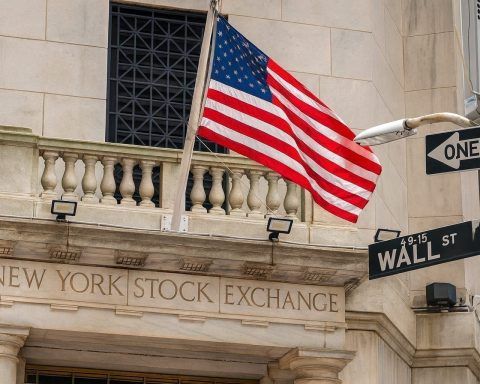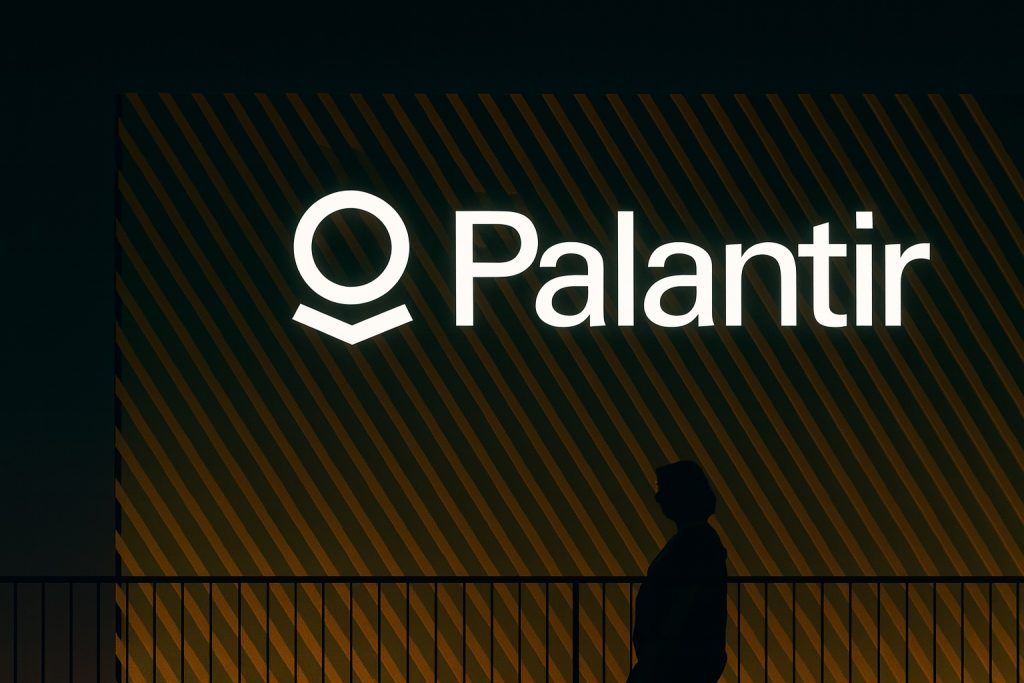Key Facts
- AI’s $100B Chip Deal: OpenAI struck a multi-year deal for hundreds of thousands of AI chips from AMD, sending AMD’s stock soaring 34% in one day [1]. An AMD executive called the partnership “transformative” for the industry [2].
- OpenAI Targets Enterprise: At OpenAI’s developer conference, CEO Sam Altman said to “expect a huge focus” on enterprise uses of ChatGPT [3]. Executives outlined plans to turn ChatGPT into an “operating system” for apps [4], announcing partnerships with Spotify, Zillow, Mattel and more.
- Big Tech in the Crosshairs: French prosecutors opened a criminal probe into Apple’s Siri for alleged illicit voice data collection [5]. In the U.S., the Supreme Court let stand an injunction forcing Google to allow rival app stores and payment links on Android [6] [7] – a major win for Fortnite maker Epic Games.
- Tesla’s Cheaper EV Push: Tesla is unveiling a more affordable Model Y SUV (under $30k after tax credits) to revive sagging sales and market share [8] [9]. Elon Musk noted many want a Tesla but “don’t have enough money… so the more affordable we can make the car, the better” [10].
- Cyber Attacks & Crypto Highs: Japanese brewer Asahi restarted operations after a week-long shutdown caused by a ransomware cyberattack [11], highlighting a wave of hacks hitting global firms [12]. Meanwhile, Bitcoin hit a fresh all-time high around $125,000 [13], fueled by institutional demand and a weak dollar. One investor declared “the next 12 weeks are going to be very fun for bitcoin holders” [14].
- Space Race Updates: SpaceX set October 13 for the next Starship test launch – a critical step toward NASA’s 2027 Moon landing goal [15]. Experts warn the lunar timeline could “be years late” even as SpaceX presses forward [16]. And on Mars, NASA’s Perseverance rover seemingly snapped a photo of interstellar comet 3I/ATLAS streaking past – a 31,000-mile-long blur captured from the Red Planet [17] [18].
Artificial Intelligence: Chips, Partnerships & New Players
AI Hardware Mega-Deal: A blockbuster partnership emerged as ChatGPT creator OpenAI agreed to buy AMD’s latest AI chips in bulk. The multi-year deal will see AMD supply hundreds of thousands of GPUs – an arrangement AMD expects will generate over $100 billion in new revenue over four years [19] [20]. In exchange, OpenAI secured an option to take up to a 10% stake in AMD for virtually pennies per share [21]. Investors cheered the news: AMD’s stock leaped 34% in a single day, its biggest jump in nine years, adding about $80 billion to AMD’s market value [22] [23]. “We view this deal as certainly transformative, not just for AMD, but for the dynamics of the industry,” AMD executive VP Forrest Norrod said [24]. Analysts likewise called it a major “vote of confidence” in AMD’s AI technology – though they noted it won’t quickly dethrone market-leader Nvidia’s dominance [25]. OpenAI CEO Sam Altman welcomed the pact, saying it will help OpenAI build the massive computing infrastructure it needs [26]. (How OpenAI will fund this chip shopping spree remains unclear, given reports it burned through $2.5B cash in the first half of 2025 [27].) The deal comes on the heels of Nvidia’s own agreement to invest $100B in OpenAI and supply it with next-gen processors [28], underscoring the insatiable demand for AI horsepower as companies race toward more advanced AI systems [29].
OpenAI’s Enterprise Ambitions: OpenAI didn’t stop at hardware – it also used its October 6 developer conference to unveil a sweeping strategy for business AI. “You should expect a huge focus from us on really leaning into enterprise,” CEO Sam Altman told reporters at the event [30]. The company announced a flurry of partnerships to integrate its AI into mainstream apps and services. For example, Spotify will let ChatGPT generate automated music playlists, and Zillow will allow homebuyers to ask ChatGPT for tailored real-estate searches [31]. OpenAI debuted new developer tools to make such integrations easier [32]. According to OpenAI’s Nick Turley, ChatGPT is evolving “from an app that is really useful into something that feels a bit more like an operating system” for many tasks [33]. OpenAI wants ChatGPT to become a central portal where users can seamlessly tap a broad range of services via AI. President Greg Brockman emphasized they are “committed to building the best enterprise platform” [34] for AI. The partnership news even gave a bump to stocks of collaborators like Zillow and Figma, highlighting how OpenAI’s imprimatur confers instant AI credibility [35]. Still, OpenAI’s aggressive expansion has raised eyebrows about an AI investment bubble – a topic Altman addressed, admitting parts of the industry are “kind of bubbly” but insisting “real value will get created” in the long run [36].
Musk’s xAI Takes Shape: Meanwhile, Elon Musk – who helped start OpenAI years ago – is forging ahead with his own AI venture, xAI. In early October, Musk appointed veteran financier Anthony Armstrong as xAI’s chief financial officer [37]. Armstrong, a former Morgan Stanley dealmaker, advised Musk on the $44B Twitter takeover in 2022 and has been quietly working with xAI for weeks [38] [39]. According to reports, he’ll also double as CFO of Musk’s social platform X (formerly Twitter), tasked with steering it back to financial health after an advertiser exodus under Musk’s free-speech-focused leadership [40]. Musk founded xAI in 2023 vowing to build safe AI that can rival offerings from OpenAI and other Big Tech players [41]. The choice of a high-profile Wall Street veteran signals Musk’s seriousness about scaling xAI – and perhaps foreshadows significant fundraising or deals ahead to compete in the AI arms race.
Big Tech Developments: Product Pivots, Legal Fights & Privacy Scrutiny
Tesla’s Affordable EV Bet: Facing intensified competition and a slowdown in sales, Tesla is trying to rekindle consumer excitement with a cheaper electric vehicle. On October 7, Tesla was set to unveil a more affordable Model Y – a new version of its best-selling SUV designed to significantly undercut current prices [42]. CEO Elon Musk has for years floated plans for a ~$25,000 mass-market EV, and while an all-new budget model was canceled in 2022, this latest Model Y variant is expected to hit a price “below the key threshold of $30,000” (including U.S. tax credits) using Tesla’s existing design platform [43] [44]. Musk has stressed that demand for Teslas remains high but many consumers simply “don’t have enough money in the bank” to buy one – “so the more affordable we can make the car, the better,” he said in a recent earnings call [45]. The timing is critical: a U.S. EV subsidy of $7,500 just expired for Tesla, effectively raising prices overnight [46]. By rolling out a lower-cost Model Y now, Tesla hopes to broaden its customer base and fend off rivals in an EV market that’s grown fiercely competitive. Hype was already building over the weekend thanks to Musk’s teaser posts on X, though as of the announcement no big in-person launch event was confirmed [47]. Investors and EV enthusiasts will be watching if this move can reignite Tesla’s sales growth going into 2026.
Apple’s Siri Under Investigation: Over in Europe, Apple landed in hot water with privacy authorities. Paris prosecutors revealed on Oct 6 they have opened a criminal probe into Apple’s Siri voice assistant after receiving a detailed complaint from a former Apple contractor-turned-whistleblower [48] [49]. The complaint, filed by French digital rights group Ligue des Droits de l’Homme (LDH), alleges that Apple’s Siri has been secretly recording, storing, and analyzing users’ conversations without proper consent [50] [51]. The whistleblower, Thomas Le Bonniec, previously exposed how Apple employees listened to Siri recordings – and now his testimony is at the center of this case. French cybercrime police are investigating potential “illicit data collection” by Apple [52]. “The opening of a criminal investigation… sends a clear message: fundamental rights matter,” Le Bonniec said in a statement, praising authorities for taking the claims seriously [53]. Apple, for its part, told Reuters it has tightened Siri’s privacy controls since 2019 (when Le Bonniec first went public) and again in recent years [54]. The company insists Siri recordings are not shared with marketers or sold, and that users can opt out of having audio samples reviewed [55]. Nonetheless, the probe represents a significant legal challenge for Apple in Europe, where regulators are increasingly aggressive on Big Tech privacy issues. If wrongdoing is found, Apple could face fines or even criminal penalties under France’s strict data laws – not to mention reputational damage as it positions itself as a privacy-conscious tech giant.
Google’s App Store Reckoning: In a major U.S. antitrust battle, Google took a hit in its fight with Fortnite developer Epic Games. On October 6, the U.S. Supreme Court refused to freeze a sweeping injunction that orders Google to make pro-competition reforms to its Android Play Store [56]. The injunction – originally won by Epic in a lower court – requires Google to allow Android users to download alternative app stores through Google Play and to let developers direct users to outside payment options (bypassing Google’s billing system) [57]. Google had asked the Supreme Court to pause these measures while it appeals, but the Justices denied the stay [58]. That means by July 2026, Google must implement significant changes opening up its mobile app ecosystem (unless it wins a reversal on appeal). This legal fight stems from Epic’s lawsuit accusing Google of monopolizing app distribution and in-app purchases on Android devices [59]. Epic’s CEO Tim Sweeney lauded the Supreme Court’s move as a victory for developers and consumers, arguing it will restore competition and lower costs in the mobile app market (Epic similarly fought Apple on App Store policies in a separate case). Google maintains its Play Store practices are fair and plans to continue its appeal [60], but the practical impact is looming: the core Android experience could fundamentally change, giving users more choice in how they get apps and pay for services. The case highlights intensifying antitrust scrutiny of Big Tech platforms – and could set precedent for how much control gatekeepers like Google can exert over their ecosystems.
Amazon & Meta – Other Notes: (No major ground-shaking news from Amazon, Meta, or Microsoft was reported in this two-day window, aside from routine product updates and ongoing regulatory scrutiny. For instance, Meta continued facing challenges in the EU over data rules, and Microsoft’s LinkedIn announced minor layoffs amid an ad slowdown – developments overshadowed by the larger headlines above. Amazon did launch a new “Think Big Circle” initiative to connect data center communities and spur STEM education [61], but this was a relatively niche program announcement compared to the seismic news elsewhere.)
Cybersecurity: Ransomware Strikes Industry Giants
Brewer Brought to a Halt: A cyberattack in Japan showed how real-world infrastructure can be disrupted by digital threats. Asahi Group, the country’s largest beer maker, was hit by a ransomware attack in late September that knocked out its IT systems – forcing the company to halt beer production nationwide for about a week [62]. By October 6, Asahi announced it had finally resumed operations at all six of its breweries, after scrambling to restore order processing, shipping logistics, and call centers that had been paralyzed [63] [64]. The outage led to noticeable beer shortages in stores, bars and restaurants across Japan as the flow of Asahi’s popular Super Dry beer was cut off [65]. Asahi has begun shipping beer again, and plans to clear the backlog of over a dozen beverage products by mid-October [66]. The company hasn’t disclosed the attackers or the exact ransom details, but cybersecurity analysts note this is the latest in a string of ransomware assaults on major global firms [67]. In recent months, everything from automakers to healthcare companies have been targeted. Asahi’s breach follows similar incidents like the one that disrupted UK automaker Jaguar Land Rover earlier this year [68]. The trend underscores how cybercriminal groups are escalating attacks on critical business operations – often seeking multi-million dollar payoffs. Governments worldwide have urged companies to harden their defenses, with October being observed as Cybersecurity Awareness Month in many places. Asahi’s ordeal is a stark reminder that cyber threats can hit anyone, and a single breach can cascade into tangible economic damage (empty shelves and lost revenue) in a short time.
Other Cyber Highlights: U.S. authorities this week warned of a newly discovered, 13-year-old vulnerability in the widely used Redis database system that could allow remote code execution by attackers [69]. Enterprise admins were urged to patch immediately to prevent exploits in the wild. Additionally, the Clop ransomware gang made headlines for actively exploiting an Oracle software 0-day to breach corporate networks [70]. And in academia, cybersecurity experts are bracing for the impact of AI and quantum computing on hacking – a new report suggests emerging AI tools could supercharge both cyber offense and defense, making 2026 a pivotal year for cyber risk strategies [71]. While these technical developments didn’t grab mainstream news in the way the Asahi attack did, they point to an evolving threat landscape that companies and governments are racing to address.
Space & Technology: Launches and Cosmic Visitors
Starship Set for Takeoff: In space news, SpaceX confirmed a launch date for the next test flight of its Starship – the most powerful rocket ever built. According to SpaceX, Starship Flight 11 is scheduled for October 13, 2025, pending final preparations [72]. The giant rocket will lift off from the company’s Starbase in Texas and aim for an ocean landing, similar to the previous two tests [73]. This flight is crucial for SpaceX’s partnership with NASA: Starship is slated to land astronauts on the Moon for NASA’s Artemis program. NASA’s current target for the Artemis III Moon landing is 2027, and Starship’s success is essential to that timeline [74] [75]. SpaceX says the upcoming test will push the envelope with experiments on the Super Heavy booster’s next-generation engines and stress-testing the Starship’s heat shield during reentry [76]. The company recently conducted a static fire of the booster on Sept 22 as part of these preparations [77]. Despite steady progress, there are schedule jitters – a former NASA mission operations director cautioned that Starship’s development delays could mean the 2027 Moon landing slips by “years” if issues aren’t resolved [78]. Nonetheless, SpaceX and Elon Musk remain optimistic. Musk ultimately envisions using a fleet of Starships to establish a permanent Mars colony by the end of the decade [79]. For now, all eyes are on the October 13 test, which will be live-streamed and will demonstrate whether Starship can build on its last flight’s success. A good outcome would mark a big leap toward fully reusable spacecraft and humanity’s return to the Moon.
Martian Photo of an Interstellar Visitor: In an astronomical oddity, scientists believe NASA’s Perseverance rover on Mars managed to snap a photo of a mysterious interstellar object passing through our solar system [80]. The object, catalogued as 3I/ATLAS, is only the third known visitor from beyond our solar system (after ‘Oumuamua in 2017 and comet Borisov in 2019). As predicted, 3I/ATLAS flew remarkably close to Mars in early October. Perseverance pointed its navigation camera at the sky and captured images showing a bright streak against the darkness – likely the interstellar comet hurtling past [81]. Harvard astronomer Avi Loeb analyzed the images and estimated the streak to be some 31,000 miles long in the raw photo [82]. This doesn’t mean the object itself is that huge – the length is mostly due to the camera’s long exposure blurring the fast-moving comet. In fact, Loeb noted that if seen in a single short snap, 3I/ATLAS would probably appear as just a small circular dot [83]. It’s not 100% confirmed that the rover’s images show 3I/ATLAS, but if true, it would be the first time a spacecraft on another planet photographed an interstellar object. NASA is awaiting additional data, including an image taken by the Mars Reconnaissance Orbiter’s high-res camera, to validate the sighting [84]. 3I/ATLAS has intrigued scientists because preliminary research suggests it might be unusually large – possibly miles across and tens of billions of tons in mass [85]. Observations like Perseverance’s will help pin down its size and composition. The interstellar comet’s visit is brief, but it offers a rare chance to study material from another star system. As one paper noted, 3I/ATLAS is even emitting strange heavy metals as it outgasses [86], raising exciting questions about its origin. While the general public was transfixed by the supermoon on October 6 (the year’s first, illuminating skies worldwide), astronomers were giddy at the prospect that Mars had caught a flying piece of another solar system on camera.
Startups, Investments & Crypto: Big Funding and a Record Bitcoin Run
VC Funding Flows: The tech startup ecosystem saw major funding rounds announced in early October, signaling that investor appetite for innovation remains alive and well. On October 6, a slew of sizable investments were revealed across AI, developer tools, biotech and more. Leading the pack was Vercel, a Silicon Valley cloud platform for web and AI applications, which raised a whopping $300 million Series F round at a $9.3 billion valuation [87]. The hefty raise – co-led by Accel and Singapore’s GIC – underscores Vercel’s key role in powering AI-driven web services (its tech is used by OpenAI, Anthropic and others) [88] [89]. Another highlight was Supabase, an open-source backend-as-a-service startup seen as a popular alternative to Google’s Firebase. It secured $100 million (Series E) at a $5 billion valuation to expand its platform and AI developer tools [90] [91]. AI continues to dominate funding headlines: fintech firm Feedzai grabbed $75M to grow its AI-powered fraud detection network [92] [93], and Harvey, maker of an AI legal assistant, attracted a strategic €50M investment to fuel global expansion [94]. In Europe, deeptech and biotech startups scored large rounds as well – for instance, Germany’s NanoPhoria Bioscience closed €83.5M to advance inhalable heart therapies, and France’s Trogenix raised €80M for next-gen gene therapy trials [95]. Even in climate tech, early-stage bets are happening: Vycarb secured $5M for its ocean-based carbon removal solution [96]. Overall, the first week of October saw a healthy mix of late-stage mega-rounds and smaller early-stage deals, suggesting that while the pace is more measured than the frenzy of 2021, investors are still writing big checks for compelling tech. Top VCs like Accel, Peak XV (formerly Sequoia India), Khosla Ventures and even corporates like BlackRock and Deutsche Telekom participated in these deals [97]. The continued flow of capital into AI and infrastructure startups hints that VCs believe these companies can become the next generation of tech giants – despite broader market chatter about inflated valuations. As one venture analyst put it, “the barbell is back” with huge late-stage financings on one end and targeted seed investments on the other [98], even as the industry navigates economic uncertainty.
Bitcoin Blasts to New High: In the cryptocurrency realm, Bitcoin reminded everyone it’s still the king of the digital asset hill. On October 6, Bitcoin’s price hit a new all-time record high, breaching its previous peak from late 2021. The world’s largest cryptocurrency surged past $125,000 per coin for the first time, reaching an intraday high around $125,836 [99]. It then hovered just above $125K, marking a more than 33% gain year-to-date [100]. Crypto analysts attributed the rally to a confluence of factors: rising interest from institutional investors, anticipation of a possible Bitcoin ETF approval in the U.S., and a tailwind from macroeconomic trends like a weakening U.S. dollar [101] [102]. Notably, the policy environment under President Donald Trump has been viewed as friendlier to crypto – Trump’s administration recently green-lit certain digital asset banking activities, which some say has added legitimacy to Bitcoin [103]. The surge also reflects Bitcoin’s growing correlation with mainstream markets: as some investors fret about inflation and currency volatility, they’ve diversified into Bitcoin as “digital gold.” Longtime crypto bulls seized on the milestone. Investor Anthony Pompliano wrote to clients, “Bitcoin is the hurdle rate. If you can’t beat it, you have to buy it. And I think the next 12 weeks are going to be very fun for bitcoin holders” [104]. His bullishness stems from Bitcoin’s upcoming “halving” event in mid-2026, as well as expectations that more institutional money will flow into crypto by year’s end. Of course, crypto being crypto, volatility is ever-present – on October 7, Bitcoin pulled back slightly amid profit-taking. But the broader momentum has put crypto back in headlines. Other major tokens like Ether saw sympathy gains (though still below their peaks). Crypto enthusiasts argue that Bitcoin’s breakout above $100K signals a new market cycle where big players like hedge funds and tech firms will increasingly treat Bitcoin as a serious asset. Skeptics, however, warn that regulatory crackdowns (the SEC is still resisting full crypto ETF approvals) and crypto exchange risks could rain on this parade. For now, though, Bitcoin’s record run is a psychological boost to the industry – underscoring that, even after a tumultuous couple of years, the original cryptocurrency is not just surviving but thriving.
Government Tech Policy & Regulation: Security and Antitrust Moves
U.S. Tightens Tech Trade Curbs: In Washington, regulators rolled out new measures targeting perceived national security threats from foreign tech. The Federal Communications Commission (FCC) announced plans to further tighten restrictions on Chinese telecommunications equipment used in U.S. networks [105]. On October 6, FCC Commissioner Brendan Carr said the agency will vote at its Oct. 28 meeting on rules to close loopholes that still allow some banned Chinese tech into U.S. markets [106] [107]. The FCC had already banned the sale of new gear from Chinese companies deemed security risks (like Huawei, ZTE, Hikvision, and China’s big state-run telcos) by placing them on a “Covered List” in recent years [108]. The upcoming vote goes a step further – it would prohibit U.S. sales of devices that contain components from any firm on that blacklist, even if the final product is made by a different manufacturer [109]. “We will also tee up questions about how to further improve the process and keep bad gear out of our networks,” Carr said [110], indicating the FCC may also consider revoking past equipment authorizations. U.S. officials allege that Chinese-made network hardware could be manipulated by Beijing for espionage or cyber attacks (claims the Chinese companies deny). This FCC action aligns with a broader U.S. strategy of restricting China’s access to advanced tech and securing supply chains – from export controls on semiconductors to bans on TikTok on government devices. China’s government has criticized these moves as protectionism. The FCC’s stricter rules are expected to pass given bipartisan concern over communications infrastructure security. For rural U.S. telecom carriers who still have some older Huawei/ZTE gear in place, it may mean an expensive rip-and-replace process ahead (Congress has appropriated funds for this, but industry groups say it’s not enough). Overall, the decision underscores the tense tech standoff between the U.S. and China, with each side increasingly walling off its digital infrastructure from the other.
Global Antitrust Battles: Beyond the Google-Epic saga mentioned earlier, tech giants are facing legal challenges on multiple fronts. In Europe, Qualcomm went on trial in London over a £480 million (~$647M) class-action lawsuit alleging the chipmaker abused its dominance in smartphone chips [111]. The case, brought by a UK consumer advocacy group, claims Qualcomm forced phone makers Apple and Samsung to pay inflated royalties on patents – costs that were passed on to millions of British consumers in the form of higher device prices [112] [113]. Lawyers for the consumer group argued Qualcomm’s “no license, no chips” policy (refusing to sell chips unless manufacturers signed patent licenses) acted as an “industry-wide private tax” that enriched Qualcomm and drove up handset costs unfairly [114]. Qualcomm denies the allegations, saying its licensing practices were lawful and that its innovations enabled modern smartphones. The UK trial will run about five weeks, and if Qualcomm loses, millions of UK iPhone and Samsung users from 2015–2022 could be eligible for small payouts. Separately, in the U.S., the Supreme Court dealt SAP a setback by refusing to derail an antitrust suit against the German software giant [115]. American database firm Teradata has accused SAP of tying its analytics software to its own database product to stifle competition [116]. SAP wanted the case thrown out, but now it is heading toward a 2026 trial [117]. These cases reflect how competition regulators and courts worldwide are increasingly taking on Big Tech and enterprise giants over everything from app stores to patent fees to enterprise software bundling. For consumers and smaller competitors, these legal battles could eventually lead to more choices and lower costs – or so the regulators hope – while the companies insist that what’s at stake is their ability to recoup R&D investments and integrate products for efficiency. Either way, Big Tech’s legal headaches look set to continue as October’s events roll into a larger narrative of reining in tech power.
AI Governance on the Horizon: Lastly, governments are also grappling with how to manage the rapid rise of AI. In a landmark move just days before our Oct 6–7 window, California Governor Gavin Newsom signed SB 53, the Transparency in Frontier Artificial Intelligence Act, into law – the first comprehensive state AI safety regulation in the U.S. [118]. This new law will require AI developers to disclose more information about powerful AI systems and adhere to certain testing and risk mitigation standards. Notably, major AI firms like OpenAI and Meta did not oppose the bill (and Anthropic even endorsed it) [119], with OpenAI calling it a “critical path toward harmonization with the federal government” on AI rules [120]. However, some tech industry lobbyists criticized the law as potentially chilling innovation [121]. California’s action is likely a bellwether as other states – and the federal government – consider their own AI regulations. Newsom also issued an executive order to study AI’s impacts, while in Washington D.C., Congress held hearings on AI oversight. Globally, the EU is finalizing its sweeping AI Act, and Britain just hosted a summit on AI safety. All of this points to a future where alongside new AI breakthroughs, we will see new rules to govern them. The balance policymakers seek is to encourage innovation (so as not to strangle a booming industry) while protecting the public from AI-related harms like bias, privacy invasion, or safety risks. It’s a tough needle to thread. As October’s whirlwind tech news shows – from transformative AI deals and products, to hacks and legal battles – technology’s influence on society is ever-expanding, and so too is the urgency for wise governance. The coming months will reveal how these initial steps in AI policy and Big Tech regulation play out, potentially reshaping the landscape of the tech industry in 2026 and beyond.
References
1. www.reuters.com, 2. www.reuters.com, 3. www.reuters.com, 4. www.reuters.com, 5. www.reuters.com, 6. www.reuters.com, 7. www.reuters.com, 8. www.reuters.com, 9. www.reuters.com, 10. www.reuters.com, 11. www.reuters.com, 12. www.reuters.com, 13. www.reuters.com, 14. www.reuters.com, 15. www.the-independent.com, 16. www.the-independent.com, 17. futurism.com, 18. futurism.com, 19. www.reuters.com, 20. www.reuters.com, 21. www.reuters.com, 22. www.reuters.com, 23. www.reuters.com, 24. www.reuters.com, 25. www.reuters.com, 26. www.reuters.com, 27. www.reuters.com, 28. www.reuters.com, 29. www.reuters.com, 30. www.reuters.com, 31. www.reuters.com, 32. www.reuters.com, 33. www.reuters.com, 34. www.reuters.com, 35. www.reuters.com, 36. www.reuters.com, 37. www.reuters.com, 38. www.reuters.com, 39. www.reuters.com, 40. www.reuters.com, 41. www.reuters.com, 42. www.reuters.com, 43. www.reuters.com, 44. www.reuters.com, 45. www.reuters.com, 46. www.reuters.com, 47. www.reuters.com, 48. www.reuters.com, 49. www.reuters.com, 50. www.reuters.com, 51. www.reuters.com, 52. www.reuters.com, 53. www.reuters.com, 54. www.reuters.com, 55. www.reuters.com, 56. www.reuters.com, 57. www.reuters.com, 58. www.reuters.com, 59. www.reuters.com, 60. www.reuters.com, 61. vavoza.com, 62. www.reuters.com, 63. www.reuters.com, 64. www.reuters.com, 65. www.reuters.com, 66. www.reuters.com, 67. www.reuters.com, 68. www.reuters.com, 69. cyberpress.org, 70. cybersecuritynews.com, 71. www.helpnetsecurity.com, 72. www.the-independent.com, 73. www.the-independent.com, 74. www.the-independent.com, 75. www.the-independent.com, 76. www.the-independent.com, 77. www.the-independent.com, 78. www.the-independent.com, 79. www.the-independent.com, 80. futurism.com, 81. futurism.com, 82. futurism.com, 83. futurism.com, 84. futurism.com, 85. futurism.com, 86. www.yahoo.com, 87. techstartups.com, 88. techstartups.com, 89. techstartups.com, 90. techstartups.com, 91. techstartups.com, 92. techstartups.com, 93. techstartups.com, 94. techstartups.com, 95. techstartups.com, 96. techstartups.com, 97. techstartups.com, 98. techstartups.com, 99. www.reuters.com, 100. www.reuters.com, 101. www.reuters.com, 102. www.reuters.com, 103. www.reuters.com, 104. www.reuters.com, 105. www.reuters.com, 106. www.reuters.com, 107. www.reuters.com, 108. www.reuters.com, 109. www.reuters.com, 110. www.reuters.com, 111. www.reuters.com, 112. www.reuters.com, 113. www.reuters.com, 114. www.reuters.com, 115. www.reuters.com, 116. www.reuters.com, 117. www.reuters.com, 118. www.jdsupra.com, 119. www.jdsupra.com, 120. www.jdsupra.com, 121. www.jdsupra.com










